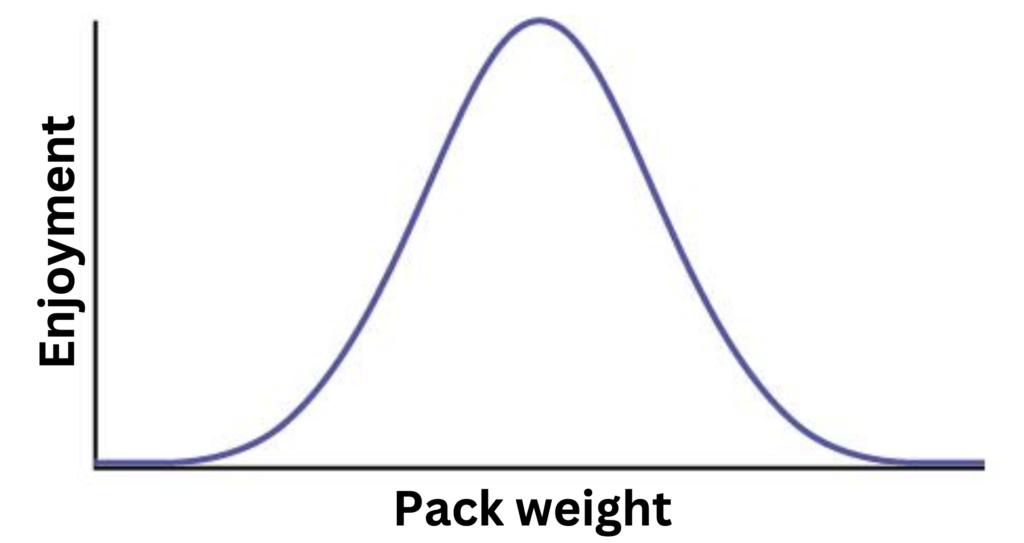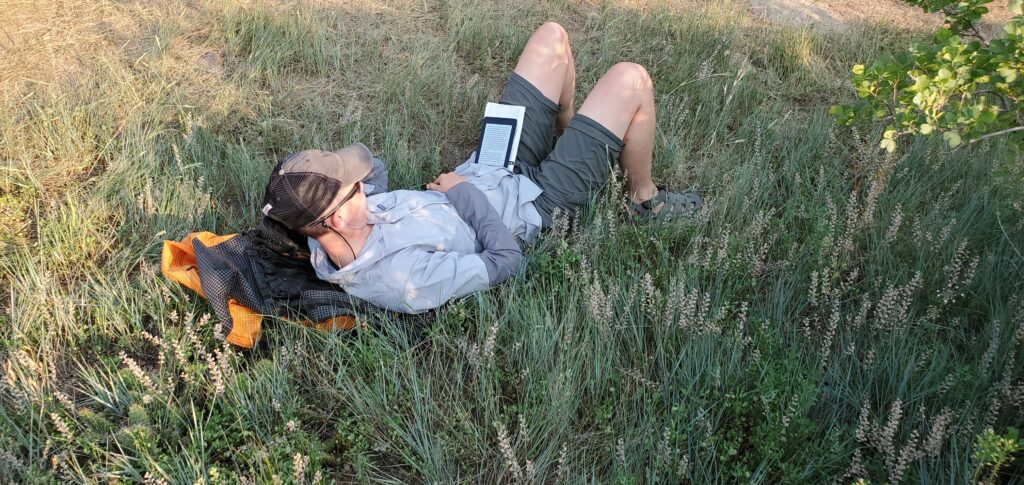Part of the backpacking experience is foregoing your usual creature comforts. No electricity, running water, Netflix, or couch. It’s somewhat of an ascetic lifestyle, but that’s also kind of the point. It’s a minimalist way to live, valuing experience over belongings and being in the moment over distractions. Having a limited number of belongings heightens your communion with nature, but there is also the practical side: everything I have I carry on my back. Even if I wanted a TV and couch to flop on at the end of the day, obviously I can’t carry that.
Though I do embrace the minimalist lifestyle of backpacking, there are a few comfort items that bring value to my experience and I’ve decided are worth carrying. What is considered a “luxury item” is a little subjective, but can be loosely defined as an item that is not needed but provides an extra level of comfort or enjoyment to the experience. A little bit of added comfort can go a long way for your morale, but you have to find the right balance. Every additional item you bring adds weight to your pack, so you have to consider carefully if the added comfort is worth the discomfort of a heavier pack. This relationship between pack weight and enjoyment can be thought of as a bell curve.

If you don’t pack enough gear, you will be uncomfortable. Without proper shelter, clothing, or food, your hiking experience will not be enjoyable. (Or worse, you could end up in a very dangerous situation).
On the other hand if you go too far and pack too many luxury items, your pack will get heavy. With a heavy load hiking becomes more difficult and less enjoyable, thus tipping the scale toward a negative experience.
The exact pack weight that hits that sweet spot – the top of the bell curve – will vary from person to person. A base weight of about 13 or 14 pounds is the sweet spot for me. See my full gear list with weights here.
I’ve found that almost everyone on the trail has at least one luxury item. It might be an inflatable pillow, a collapsable chair, or a fancy camera. I met one guy with a guitar strapped to his pack, wrapped in a garbage bag to protect from rain.
My Luxury Items
Kindle
I LOVE my Kindle. At 6.5 ounces, I feel that it is worth its weight in gold. It’s lighter than carrying one single book, but I can carry thousands of books on the device. It’s my primary source of entertainment in the evenings and I read just about every night. If I get holed up in a shelter or tent during a storm I can happily pass the hours away by reading.
I could read on my phone instead, but I much prefer the Kindle. The reading experience is more enjoyable, more book-like. Even with daily use, the Kindle battery usually lasts for weeks on end. The phone battery goes much quicker, so if I read on my phone, I probably would end up having to carry a second power bank, thus actually adding weight to my pack. Another plus is that it’s backlit, so unlike a paper book, I don’t need to use my headlamp at night – another battery saver.
Camp Shoes
I carry a pair of foam camp shoes that I bought from Walmart years ago. The feeling of taking off my hiking shoes at the end of the end is worth the 7.3 oz of extra weight. I really like to let my feet breathe at the end of the day, and it just feels good to put a different pair of shoes on.
Foot Care Items
I have foot issues – plantar fasciitis, a Haglund’s deformity, and a lot of swelling. I take extra time every evening for some foot maintenance. I roll my achey feet with a cork massage ball and use toe spreaders to stretch them out. Hopefully this will help me to continue hiking. If these items are what allow me to stay on the trail, I may even argue that these aren’t luxury items at all.
Headphones
I try to spend most of my time unplugged, listening to nature and not my phone. Sometimes though, some music or a podcast can really give me the boost I need to keep hiking. I compromise with this general rule of thumb: no headphones until after lunch. Mornings are always headphone-free, but if I feel like I need a pick-me-up in the afternoon, I’ll listen to something.
I opted to bring old-school corded earbuds instead of cordless. Corded earbuds are lighter, don’t need a carrying case, and are less likely to be lost or dropped. They also don’t require battery – one less thing to have to worry about charging. Because I have a new phone I don’t have a headphone jack, but for $8 I bought a small adapter connecting the 3.5 mm jack to my phone’s lightning port.
Buff
The buff is an all-purpose bandana/handkerchief. It’s handy as a headband, but my primary use for it is as a pillowcase. I don’t carry a pillow, instead stuffing extra clothes into a stuff sack. The thing is the nylon stuff sack “pillow” is really slippery and constantly slides off my face or sleeping pad. Another hiker taught me the trick to slip the buff over the stuff sack as a pillowcase, and it was a game changer! Much more comfortable and much less slippery. I rarely actually use the Buff for its intended purpose, but it helps me get a better nights sleep, so it stays in the pack.
These are my treasures on the trail. These few little items bring a lot of value to my hiking experience and I’m very happy to bring them along.


Okay, what’s a buff? I carry a kerchief. So important I carry a spare. Headband, washcloth, bandage, filter…
A buff is a stretchy tube of fabric that can be used as a neck warmer, headband, hat, balaclava, sun protection, or apparently a pillowcase!